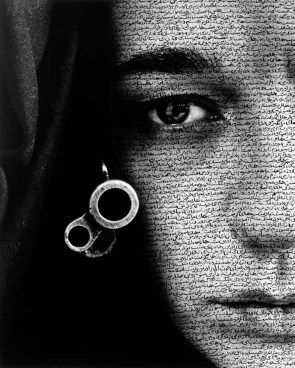Writing my dissertation was an experience I had been looking forward to starting for most of my time at university. Although at first I had no idea what I wanted to write about, through Field and Subject work I discovered the world of calligraphy; Arabic calligraphy in particular. I began to research and enjoyed watching various videos throughout my research, however I began to find reading very difficult, not only because most of the research the topic that I was researching into was in Arabic, but also because I found out that I have dyslexia. Calling this a hurdle, is an understatement, but its what I had to overcome and although I tried my best to get as much help for it; circumstances didn’t allow for any further help to be given to me. I continued to research and although hit ‘ a wall’ for a period of time, I ensured I was always informed on any updates in the world of Arabic calligraphy and in the Arabic graffiti scene; to keep motivated.
Looking more into the history of the world of Arabic calligraphy made me feel a sense of pride and I was incredibly interested in the way the language was able to spread not just in the arabian peninsula; but also on a global scale over time. The religious connections that Arabic calligraphy has with Islam are plenty, and it is believed that Arabic is the sacred language representing Islam now. The spreading of the language and the religion, ensured that calligraphy remained loved and appreciated through time. The verse in the Quran named “Al Qalam” meaning The Pen, discusses the importance of documenting history and the stories through time to ensure the same values and morals remain with the future generations, through the use of a pen and calligraphy. Calligraphy was also a way to show respect to the text in the holy book, as it is considered a skill that may only be mastered by a pupil who is also trained by a master, after much practice. This added an importance to the skill and the reputation that goes with being named a skilled master calligrapher; ensuring that it has remained a respected skill till this day.

I researched more into the contemporary side of calligraphy as that is where I was able to find a large variety of resources to research and was able to connect it personally to myself (as I grew up in Jordan in the Middle East, and this made it interesting and easy for me to relate to). Festivals, exhibitions and work from Dismaland inspired me both in my dissertation and in my practical work for my Subject project (gallery exhibition), are all the way I tried to research and what I began to become influenced by in my dissertation and in my practical work. I started to see the two merge into each other naturally throughout my work and began to feel inspired to continue to incorporate Arabic calligraphy in my practical work.
In my dissertation I examine the different styles of old Arabic calligraphy and where they all decent from (which is scattered and influenced from all over the Arabian Peninsula). I then proceed to look into and examine the way contemporary Middle Eastern artists and artists that have been inspired by the Middle Eastern art, are creating work with the same traditions, styles, structures and rules applied in calligraphy throughout their work. This was something that inspired me to practice my calligraphy skills in my work and incorporate the same rules in the way I write all the text throughout my work.
Looking at contemporary Arabic artists like Mohammed Gaber from Egypt, whose work has been used as a symbol of unity in during the Egyptian revolution.

Or Shirin Neshat whose work is about socio-economical issues and issues of inequality for women in the Middle East, having lived in places like Saudi Arabia and Morocco.

Throughout my research I began to feel more and more inspired and passionate about the issues in the Middle East and in my opinion my dissertation research is what really kept me inspired and become more aware about the issues in the Middle East in recent history.
In my practical work I incorporated Arabic calligraphy, poetry, emotional responses and objects that I found that relate to my work, all together, to create a personal and strong emotional feeling, for the viewer to experience the narrative of my work, which is usally about the refugees and war. Although my work has taken a toll on me at times, as it is not particularly happy concepts my work deals with, I have remained inspired and tried to use my dissertation research as fuel for creating my work, which I am so passionate about, and want to make a difference and have my voice heard, when it comes to the Middle Eastern issues and the way through art, messages and truths can be shared. Silent protests can be held and symbols of solidarity can be shared enabling the voices of the people to be heard.
I have been using the material and objects in my work along side the calligraphic skills that I have learnt throughout my dissertation research, to be the strength and foundations in my work to portray my narrative concepts. Through using found objects that I have collaged, painted and written calligraphy over them, I have created pieces that have more of a cultural representation as though the objects themselves have the ability to suggest to the viewer what my work is about.
I have thoroughly enjoyed writing my dissertation and although its been difficult and trying at times, it has opened a whole new world of inspiration and respect in my artist work and I know i will continue to research and practice calligraphy throughout the rest of my work for a long time to come.
